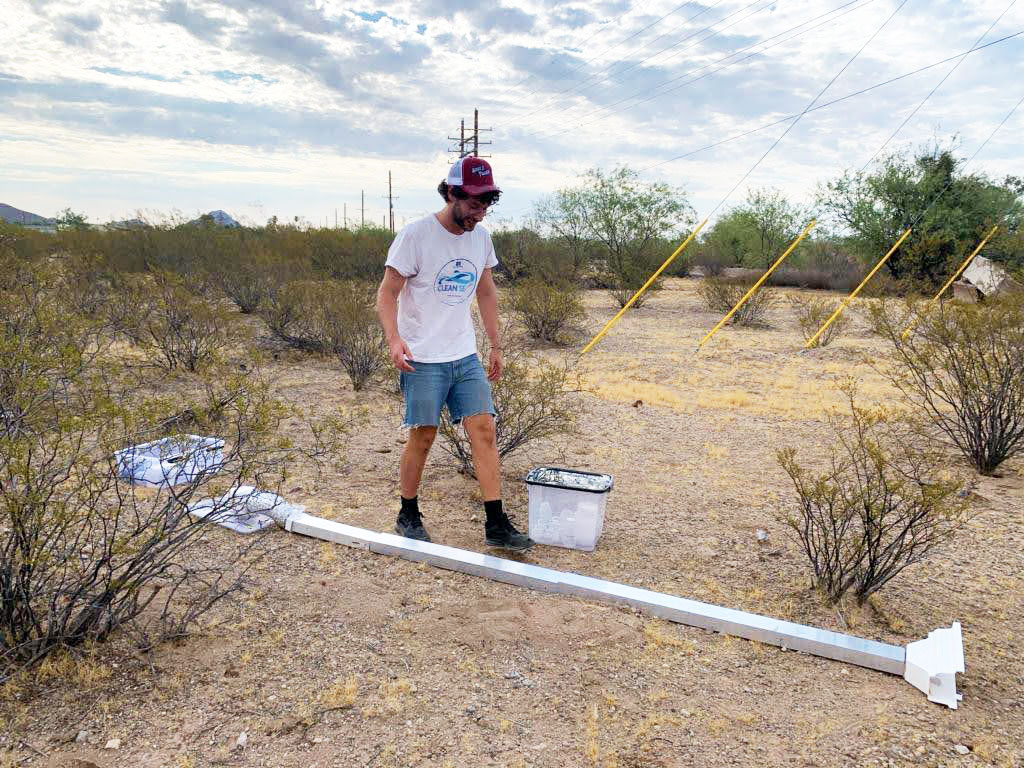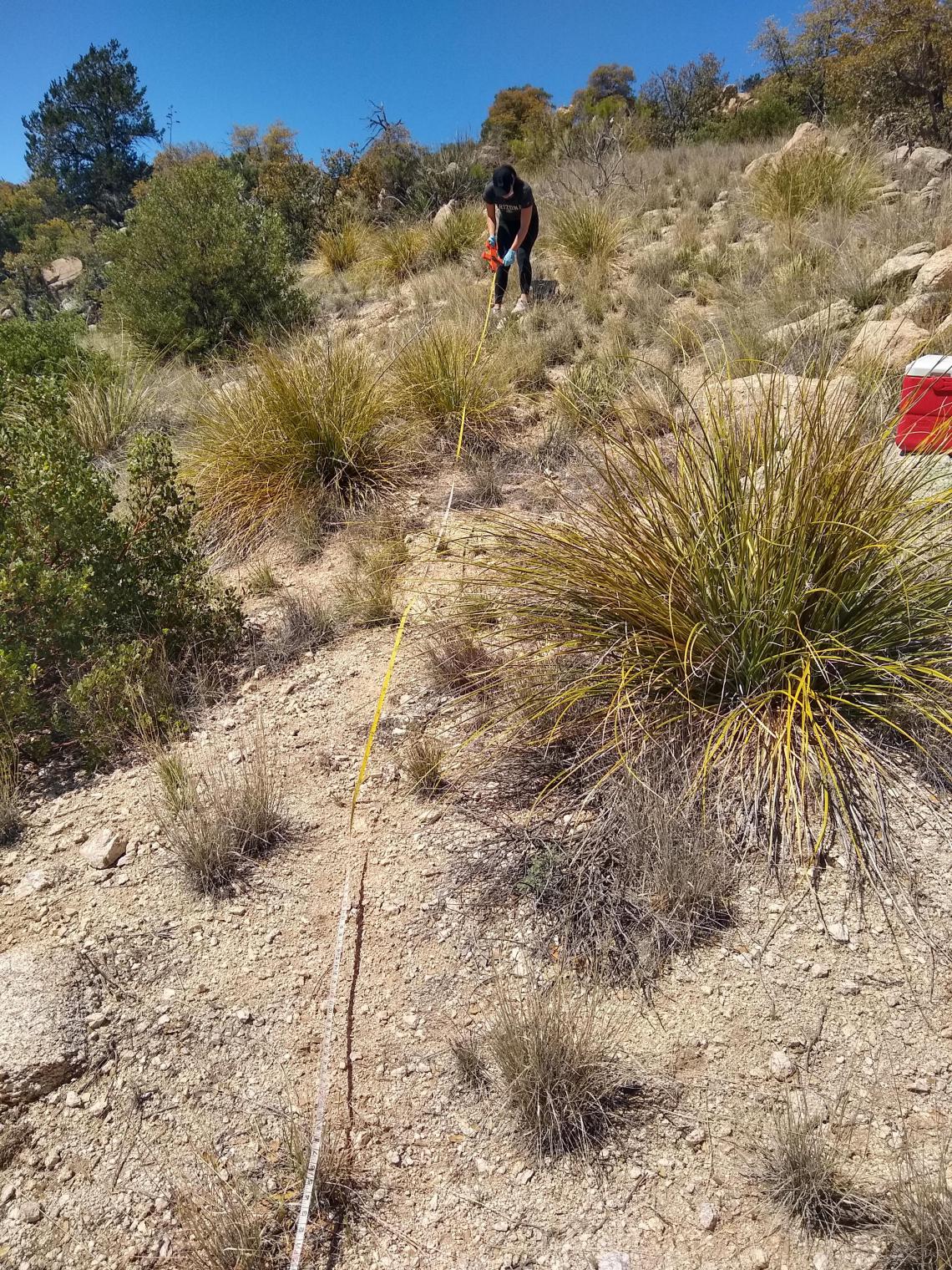Field Snapshot: Mapping Microbes in the Sky Islands
Postdoctoral researcher Gabriele Schiro and undergraduate researcher Adalee Martinez spent this summer collecting dust and soil samples to better understand microbial biogeography in the Sky Islands (as safely as possible following covid-19 precautions).
Field-Notes-Biogeography-.jpg

Billions of microorganisms are hard at work in the soil beneath our feet. These microbial communities are critical for soil health, affecting nutrient cycling and soil structure. But we shouldn’t think of all microbes as stationary organisms. Some microorganisms want to see the world, too.
These tiny organisms could potentially passively travel through dust dispersal. But if so, who are they and what do they do? That's what postdoctoral researcher Gabriele Schiro in assistant professor and microbial ecologist Albert Barberán’s lab aims to find out.
“Not much is known about microbial communities in the atmosphere.” says Schiro. “It’s a new frontier for understanding the ecology of our world.”
Schiro begins to unravel this question by examining the biogeography of microbial communities, or the geographic distribution of living things. He focuses on the landscape around the Sky Islands, incredibly biodiverse and isolated mountain ranges in located in southeastern Arizona and northern Mexico. Understanding how microorganisms disperse in air can help us better understand the complexity of soil health and stability across the Sonoran Desert.
To accomplish this goal, Schiro spent the summer outside collecting soil samples with the help of undergraduate researcher Adalee Martinez (as safely as possible following covid-19 pandemic precautions). An environmental science and ecology and evolutionary biology double major, Martinez adds the dimension of altitude to the biogeography project.
Field Work pt 2.jpg

In most mountain ranges, biodiversity decreases with altitude. But due to the unique nature of mountains rising out of the desert floor, the Sky Islands are the inverse, with high productivity at the peaks. Martinez wants to see if the gradient of microbes follows this pattern.
"This project has allowed me to travel to very beautiful and diverse areas surrounding Tucson and explore the role soil microbial communities play in these ecosystems." says Martinez.
Once the microbial communities are better defined, Schiro can move on to the next step of studying how these microbes can either stabilize or destabilize soil. This is especially important in the Southwest, where dusty conditions affect not only soil health, but also air quality and driving conditions.
Current research at the University of Arizona is looking at how to stabilize the soil, and Schiro’s research could further understanding of how to combat dusty storms and insight into potential ecological restoration methods.
Soil_Collection_Biogeography.jpg

The pair spent the summer sampling soil and dust, using a paintbrush to collect the first layer of soil, then running it through a sieve to separate larger and smaller particles. Dust (and the microbes that travel with it) are using smaller than 75 microns, about the width of a human hair.
To capture particles blowing in the air, Schiro creatively built a homemade portable wind tunnel to passively collect dust particles at the field sites.
Field-Work-Schiro.jpg

With the collection of samples during the summer finished, Schiro moves on to the second phase of the project, using metagenomics and statistical analysis to analyze microbial composition. After that he will work with assistant professor and biogeochemist Joey Blankinship, characterizing the chemical and physical characteristics of the soil samples collected over the summer to link to microbial communities.
Grateful to be out of the sun and heat, Schiro’s biggest challenge so far was logistical, heading out in the sun and heat wearing masks to sample. But he and Martinez are excited to see the results of mapping microbes in the incredible landscape of the Sky Islands.

